<< Previous | Displaying results 5651-5675 of 6769 for "" | Next >>
Augusta Feldhorn stands next to a nun while in hiding. Augusta, a Jewish child, was in hiding under an assumed Christian identity. Belgium. 1942-1945.
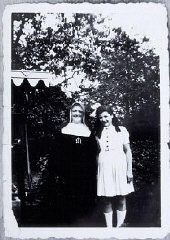
A page from the diary of Eugenia Hochberg, written while she was living in hiding in Brody, Poland. The page contains a timeline of important events that happened during the war, such as deaths and deportations of family and friends. Brody, Poland, July 1943–March 1944.
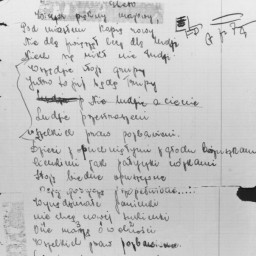
Photograph taken in December 1932 of Suse Grunbaum at age one. Soon after Hitler's 1933 seizure of power in Germany, two-year-old Suse and her parents fled to the Netherlands and settled in the town of Dinxperlo. In 1943, Jews in German-occupied Dinxperlo were ordered to assemble for deportation. Hearing of these plans, the Grünbaums went into hiding, finding refuge with Dutch farmers. The Hartemink family hid Suse and her mother for two years in their barn, first under the floorboards, then in a…
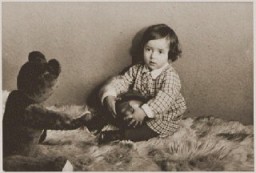
Portrait of a young Jewish girl, Lida Kleinman sitting in her room in Lacko, Poland, 1935. In January 1942, Lida was sent into hiding. She hid under false identities in Catholic orphanages until the end of the war.

In 1942, Henrietta and Herman Goslinski went into hiding to avoid deportation from the Netherlands. Their rescuer could not, however, also take their infant daughter Berty. The Dutch resistance moved Berty frequently; she was eventually moved more than 30 times. During the two-and-a-half years apart, the parents saw Berty only once and received this single photograph of her taken while she was in hiding.
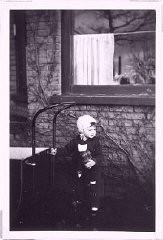
A group of Jewish girls hiding, under assumed identities, in a convent. Ruiselede, Belgium, 1943-44.
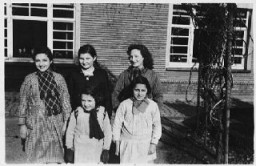
In 1942, eleven-year-old Dawid Tennenbaum went into hiding with his mother, settling in the Lvov region as Christians. Dawid disguised himself as a girl and as mentally disabled. This exempted him from attending school and prevented his being exposed.
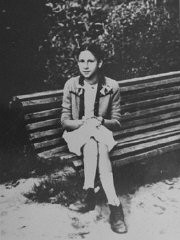
Sisters Eva and Liane Münzer. They were placed in hiding with a devout Catholic couple. In 1944, Eva and Liane were reported to the police as a result of a fight between their rescuers. The husband denounced his wife and the two Jewish girls. The three were immediately arrested and sent to the Westerbork camp. On February 8, 1944, eight- and six-year-old Eva and Liane were deported to Auschwitz, where they were murdered. Photograph taken in The Hague, the Netherlands, 1940.
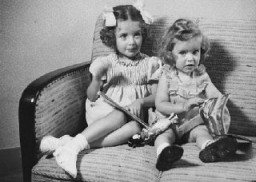
A gathering of Jewish youth from Rhodes. Rhodes, photograph taken between 1940 and 1944.
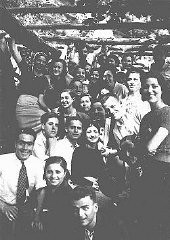
During a visit to Germany, Italian dictator Benito Mussolini (back to camera) speaks with (left to right): SS chief Heinrich Himmler; Nazi propaganda minister Joseph Goebbels; and Nazi governor of Poland Hans Frank. Germany, 1941.
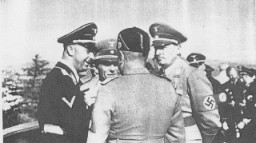
An Italian Jew who survived the war by disguising himself as a priest and living in the Vatican from October 1943 to June 1944. A number of Jews were able to seek refuge in religious houses throughout Rome, including in the Vatican. Rome, Italy, 1943-1944.
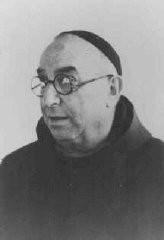
False identity card of Jewish partisan Vittorio Finzi, issued in the name of Vittorio Rossi. Italy, wartime.
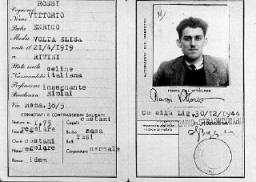
Rita Rosani, a former school teacher who joined the Italian armed resistance immediately upon the German occupation of Italy. She was killed near Verona on September 17, 1944, when her unit was surrounded. Trieste, Italy, 1940.

Jewish youth at the "HaRishona" (The First) Zionist training center construct a fishing boat. They are preparing for emigration to Palestine. Fano, Italy, 1946.
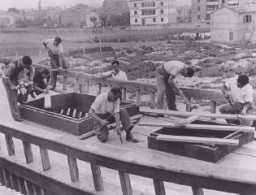
A flag bearing a swastika is raised over the city hall in Sarajevo after German forces captured the city. Sarajevo, Yugoslavia, April 16, 1941.

Streetcar in Belgrade bearing the sign: "Forbidden to Jews." Belgrade, Yugoslavia, 1941-1942
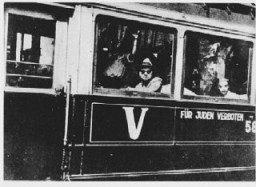
A child wears the compulsory Jewish badge. The "Z" stands for the word "Jew" (Zidov) in Croatian. Yugoslavia, ca. 1941.
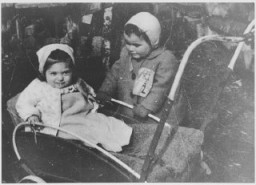
A Jewish child wears the compulsory Star of David badge with the letter "Z" for Zidov, the Croatian word for Jew. Yugoslavia, ca. 1941.
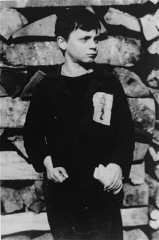
Djakovo camp, where Croatian Jews were imprisoned and killed, was located in this former flour mill. Yugoslavia, wartime.
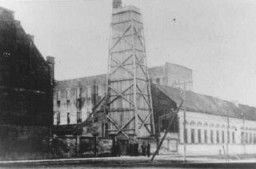
Deportation of Jews from Skopje, Yugoslavia, March 1943. The Jews of Bulgarian-occupied Thrace and Macedonia were deported in March 1943. On March 11, 1943, over 7,000 Macedonian Jews from Skopje, Bitola, and Stip were rounded up and assembled at the Tobacco Monopoly in Skopje, whose several buildings had been hastily converted into a transit camp. The Macedonian Jews were kept there between eleven and eighteen days, before being deported by train in three transports between March 22 and 29, to Treblinka.
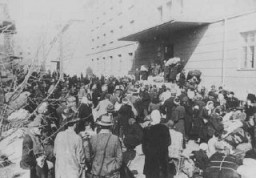
Conscripts in the Hungarian Labor Service march to a work site. Mateszalka, Hungary, September 1939.
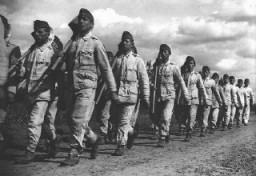
With bowls in hand, conscripts of a Jewish Hungarian labor unit wait for food. Abony, Hungary, 1940.
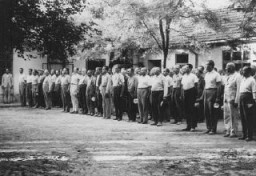
View of the quarry in a forced-labor camp established by the Hungarian government. Tokaj, Hungary, 1940.
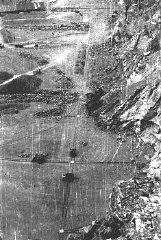
Twelve Hungarian Jewish physicians in the Iklad forced-labor camp. Iklad, Hungary, September 24, 1940.
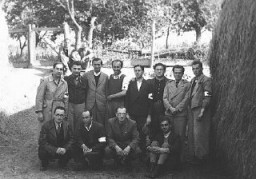
Conscripts of Hungarian Labor Service Company VIII/2 at work laying railroad track. Huszt, Hungary, 1942.
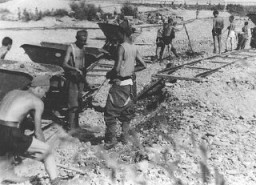
We would like to thank Crown Family Philanthropies, Abe and Ida Cooper Foundation, the Claims Conference, EVZ, and BMF for supporting the ongoing work to create content and resources for the Holocaust Encyclopedia. View the list of donor acknowledgement.